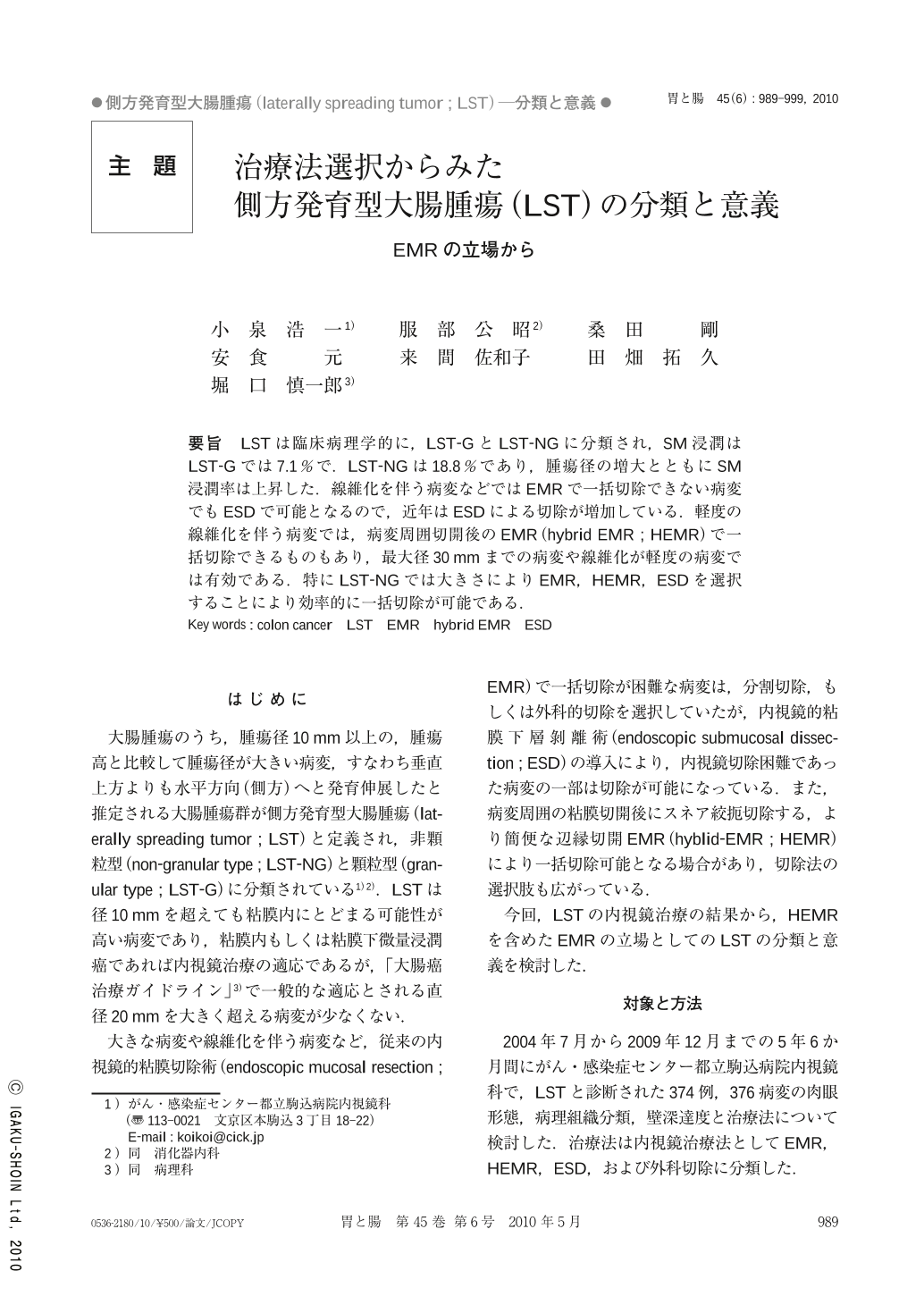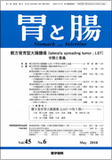Japanese
English
- 有料閲覧
- Abstract 文献概要
- 1ページ目 Look Inside
- 参考文献 Reference
要旨 LSTは臨床病理学的に,LST-GとLST-NGに分類され,SM浸潤はLST-Gでは7.1%で.LST-NGは18.8%であり,腫瘍径の増大とともにSM浸潤率は上昇した.線維化を伴う病変などではEMRで一括切除できない病変でもESDで可能となるので,近年はESDによる切除が増加している.軽度の線維化を伴う病変では,病変周囲切開後のEMR(hybrid EMR ; HEMR)で一括切除できるものもあり,最大径30mmまでの病変や線維化が軽度の病変では有効である.特にLST-NGでは大きさによりEMR,HEMR,ESDを選択することにより効率的に一括切除が可能である.
LST are classified into two subtypes : granular types(LST-G)and non-granular types(LST-NG). The incidence of invasive carcinoma was 18.8% in LST-NG, 7.1% in LST-G. In LST-NG, 6.1% of the lesions 10-19 mm in diameter invade to submucosal layer, 23.3% of the lesion 20-29mm in diameter invade to the submucosal layer.
In 376 lesions of LST, 111 were removed with EMR, 191 with ESD, 54 lesions were removed with hybrid EMR/ESD, which is EMR after incision of the mucosa outside of the lesion. 51 lesions, lager than 40mm, were removed with ESD, 41 were removed en block.
In 46 lesions smaller than 30mm, 42 were removed en block with hybrid EMR/ESD, on the other hand, 49 of 104 were removed en block with EMR. LST-NG should be removed en block because of its higher malignancy potential compared to LST-G. Hybrid EMR/ESD is a effective procedure for LST-NG, especially with slight fibrosis, in which the diameter is less than 30mm.

Copyright © 2010, Igaku-Shoin Ltd. All rights reserved.


